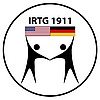A2 (2016 - 2019) – Interplay between myeloid and innate lymphoid cells determines asthma development
Both myeloid-derived pulmonary cells, through their capacity to drive adaptive T cell responses, and innate lymphoid cells (ILC) through their capacity to produce epithelial-cell modifying factors (IL-5, IL-13, IL-17A, IL-22) are important regulators of allergen driven immune responses. However, in the gut, the interplay of macrophages, ILCs and dendritic cells is necessary for inducing tolerance to dietary proteins whereas in the lung, ILC2s were shown to license DCs to potentiate TH responses in a model of allergic asthma. These observations suggest that development of protective, tolerogenic responses, versus pathogenic allergic responses to foreign protein antigens is critically dependent on the interplay between specific myeloid cells and ILCs. Simultaneously, it is clear that early life exposures (tobacco products, antibiotics, birth by caesarian section) can influence the development of allergic asthma later in life. However, how environmental exposures influence interactions between myeloid and lymphoid cells at mucosal surfaces, and how this may contribute to the observed effects of environmental exposures is unknown.
Aims:
1: To determine the co-localization of asthma-relevant myeloid and lymphoid (CD4+ T cells, ILC2s, ILC3s) cell populations in the lung following allergen inhalation in control mice and HDM-sensitized mice.
2: To determine importance of macrophage:DC interactions and novel DC:lymphoid cell interactions observed in Aim 1.
3: To identify differences in distribution of pulmonary myeloid and lymphoid cells following early life antibiotics exposure associated with increased development of asthma in later life.






